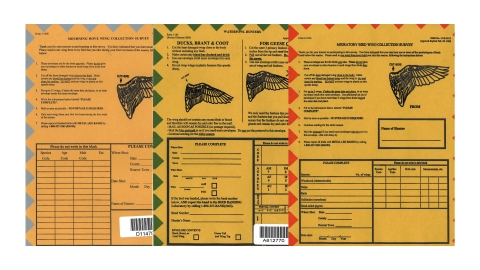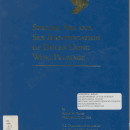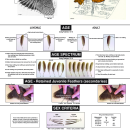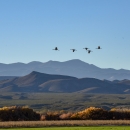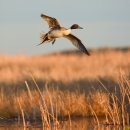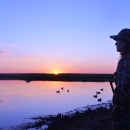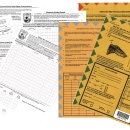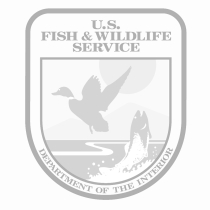States
Alabama, Alaska, American Samoa, Arizona, Arkansas, California, Colorado, Connecticut, Delaware, District of Columbia, Florida, Georgia, Guam, Hawaii, Idaho, Illinois, Indiana, Iowa, Kansas, Kentucky, Louisiana, Maine, Maryland, Massachusetts, Michigan, Minnesota, Mississippi, Missouri, Montana, Nebraska, Nevada, New Hampshire, New Jersey, New Mexico, New York, North Carolina, North Dakota, Northern Mariana Islands, Ohio, Oklahoma, Oregon, Pennsylvania, Puerto Rico, Rhode Island, South Carolina, South Dakota, Tennessee, Texas, Utah, VermontNotice - Updated on Nov. 14, 2025 - We have begun the envelope fulfillment request process again. If you are a past participant and have remaining envelopes from past seasons, please use those envelopes until we are able to ship your new order. If you do not have any envelopes, please keep your tails or wings until your envelopes arrive making sure to record the date and location of harvest. We appreciate your patience and apologize for the delay and inconvenience.
Each year, the U.S. Fish & Wildlife Service conducts the Migratory Bird Parts Collection Survey, also known as the Wing Survey. The Service asks a sample of hunters from around the U.S. to send in one wing from each duck, dove/pigeon, and woodcock/rail that they shoot, and the wing tips and tail feathers from each goose. Before every hunting season, the Service provides survey participants with postage-paid wing envelopes to send in their parts. Each wing envelope is addressed to a collection point in the U.S. The collection point depends on the flyway that the hunter lives in. If you are a participant in the Wing Survey and need additional wing envelopes, please go to the Materials Request page and follow the instructions.
Nationwide, the Service receives about 90,000 duck wings, 20,000 goose tails and wing tips, 10,000 dove wings, and 8,000 woodcock wings every year. Envelopes begin arriving at each flyway’s collection site in September, right after the beginning of dove season and the early seasons for teal and geese. Arriving parts are sorted by species and stored in a freezer. In mid November (dove), February (waterfowl/pigeon), and early April (woodcock/rail), state and federal biologists examine the contributed parts at events called wingbees. Data from wingbees help us estimate the number of birds of different species, sex, and age in the year’s harvest. They also inform us about how harvest is changing over time and among different locations. Data from the Wing Surveys are important for modeling populations and helping wildlife managers set and evaluate hunting seasons.
To learn more about wingbees, check out these two videos:
To learn more about the data produced from wingbees, check out the following library collections:
How the Wing Survey Works (waterfowl wing survey example)
Identification
Different species of ducks have unique color patterns on their wing feathers. Biologists use these patterns to identify the species of each wing. For example, Mallards have a recognizable iridescent purple speculum (the feathers covering the middle of the wing) and two white bars. Male Northern Pintails have a partly iridescent green speculum and female pintails have a dull bronze speculum. Geese species can be determined from the size and color of the tail feathers. To learn more about waterfowl wing identification, see the following resources:
Species, Age and Sex Identification of Duck Wings Using Plumage
Harvest Estimation
Combined with harvest estimates from the Waterfowl Hunter Survey, we use the number of wings from each species to calculate the approximate harvest from each species. For example, if the estimated harvest for the Pacific Flyway was 2 million ducks and 10% of the wing sample was intails, then the Pacific Flyway’s estimated Pintail harvest would be 200,000 (10% x 2,000,000).
Sex and Age Determination
In addition to species, our biologists determine sex and age (adult or young-of-the-year) from the wings. Sometimes, there are obvious differences between sexes or ages. For example, Pintail males and females have different color speculums. For other species, the differences are more subtle, and biologists must look at the colors of one or two feathers. Age can be determined through differences in feather shape, color, pattern, wear, or replacement. Age determination allows the Service to calculate an age ratio (the number of young-of-the-year birds harvested per adult) for each species.
Measuring Production
Age ratios are important because we use them to estimate reproduction during the previous breeding season. For example, in a year when waterfowl production is high, there will be more young birds than adults in hunters’ bags. In a year when production is low, hunters shoot more adult birds. Biologists at the wingbees have estimated continental waterfowl production for over 40 years. Today, we input age ratios into Adaptive Harvest Management models to set and evaluate hunting seasons.
Wing Survey data are very important for managing our waterfowl resources. Your responses help to protect future waterfowl populations and hunting for generations to come.

